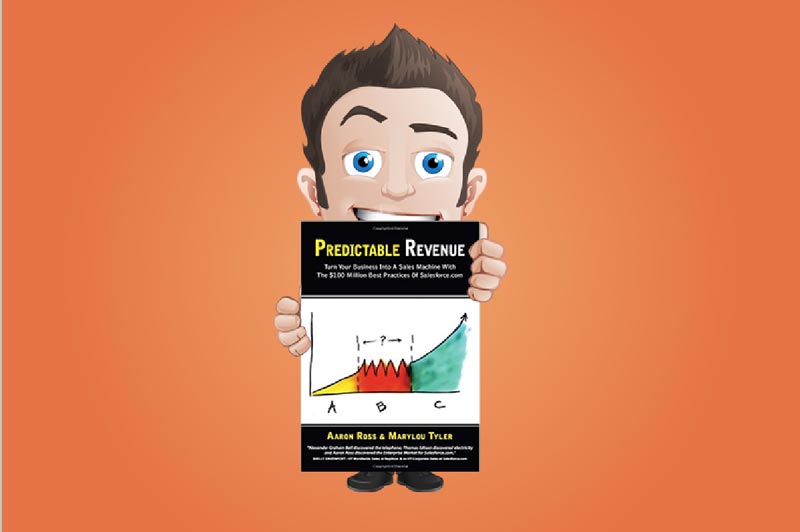Predictable Revenue (The Definitive Summary) by Aaron Ross
Turn Your Business Into an Effective Sales Machine with the $100 Million Best Practices of Salesforce.com.
Imagine that I’m a hacker, and I managed to hack into the networks of one of the most innovative and well-known technology companies on the planet.
There, sitting on the server, was a document titled “$100 million in 3 years”.
I open the document, and the first sentence I read is…
CONFIDENTIAL: This is the exact sales process we used in the last 3 years to grow our outbound sales process from $0 to over $100 million in annual revenue in less than 3 years.
Would you want a copy of that document?
If you have anything to do with sales or growing a business, I’m guessing that the answer is “YES!”.
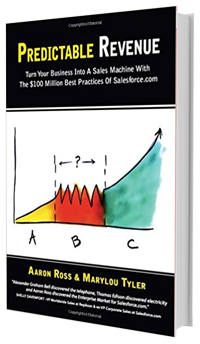

Overview
We all want predictable revenue right?
Discover the exact outbound sales process that, in just a few years, helped add $100 million in recurring revenue to Salesforce.com, almost doubling their growth…
Ross did an amazing job at Salesforce.com, and the book tells his story how he built the lead generation function from scratch and gives some great insights.
I really enjoyed Predictable Revenue and like the author’s style, in fact I found it hard to put the book down.
If you want to have a process to generate lead, qualify them, and move them down that sales funnel, this book is for you.
My favourite part of the book was around how to nurture and qualify leads.
Go grab a copy below.
That company, by the way, is Salesforce.com.
And luckily for us, that document wasn’t obtained through corporate espionage – it is a book, “Predictable Revenue ”written by Aaron Ross.
If you haven’t already read “Predictable Revenue” by Aaron Ross I strongly suggest you get yourself a copy. Ross shows us exactly how he created and launched the outbound sales process at Salesforce.com…
And yes, he really did grow it from $0 to $100 million in a few short years.
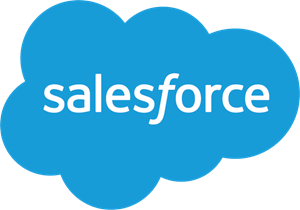
Introduction
- Predictable lead generation;
- A sales development team that connects marketing and sales; and
- Consistent sales systems.
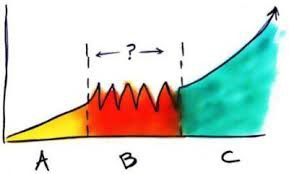
However, as he points out, predictable lead generation is proven to be the most important thing for creating predictable revenue, so that’s where we are going to focus our time.
That also comes with the added bonus that you can implement this portion of his system whether you are a large multi-billion dollar company, or a 1 person start-up.
How do we know that?
Because this is the portion of the plan that Aaron first executed on his own at Salesforce.com.
So buckle up – you’re going to learn how to rocket your sales on autopilot.
Let’s get started…
Cold Calling 1.0 vs. Cold Calling 2.0
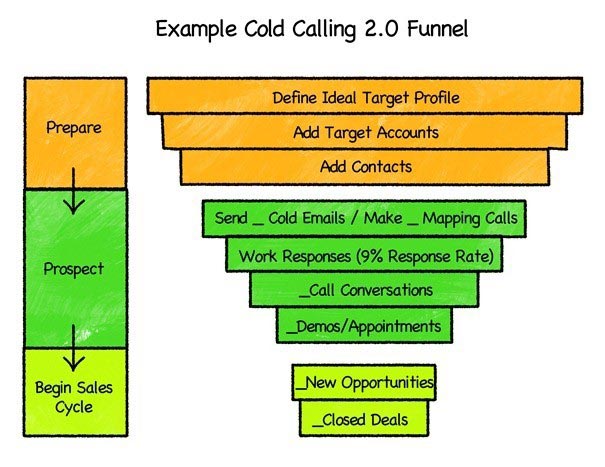
At the core of Ross’ predictable revenue strategy is something he calls Cold Calling 2.0.
Ross defines cold calling as “calling someone who doesn’t know you and who isn’t expecting your call.”
Cold Calling 2.0, on the other hand, means prospecting into cold accounts without ever making any cold calls. With this method, you are expected to qualify accounts and contacts before calling. Think research, rather than sell.
There are 5 steps in the process, and we’ll go through them together one-by-one.
Remember, this is a process that only works if you follow all of the steps. With that in mind, let’s start with the most critical step…
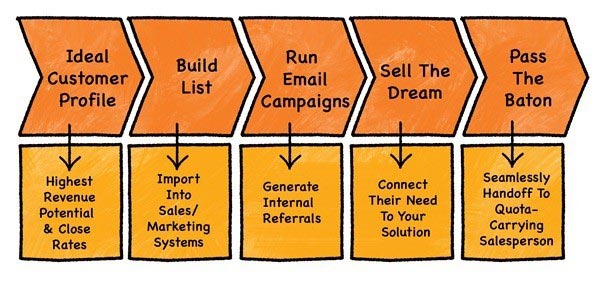
Step 1
get clear on your ideal customer profile
The first thing you need to do in order to create your own predictable revenue machine is to get clear on your ideal customer profile.

First things first, create your customer avatar – Remember you can have more than one!
This is going to help maximize productivity and sales by identifying great prospects more easily through smart targeting. On the flip side, it will save time by disqualifying poor prospects more quickly.
If you don’t yet know exactly who you’re target market is, you should be thinking about where the highest likelihood of winning business, and where the highest potential for generating revenue will be.

You need to clarify which criteria matters most to your business, but here are some sample criteria to get your creative juices flowing:
- How many employees does your target company have?
- What industries are they in?
- What geographies are they in?
- What is their sales model?
- How much money per month do they spend on what your company sells?
- What specific products/services are they using today?
- What is the financial status of the company – are they growing and profitable?
- What values do the people you most want to deal with have?
- What is the exact role/title of the person you need to reach in that company in order to close a sale?
- What are the core challenges the company you are trying to sell to face regularly?
Ross suggests that you can have more than one “ideal customer,” but you should limit yourself to 1-5 types of profiles.
Your criteria will also be changing as you go through this process learning more about what’s working for you and what isn’t. Remember to keep refreshing this list regularly.
Once you have unearthed your ideal customer profile, it’s time to move on to step #2.
Step 2
building your list of targets
The second step in the process is to build your list of targets. As Ross points out, building marketing lists is beyond the scope of his book.

However, the general idea is that you should use one of the more popular list services, like Salesforce’s Data.com, OneSource, Hoovers, InsideView or ZoomInfo.
The good news is that most of you have probably started to build an internal marketing list, providing your start, before you dive into paid services.
Just ensure that before you move to step #3, you have a list of people that fit the criteria you figured out in step #1.
Once you have that covered, let’s move on.
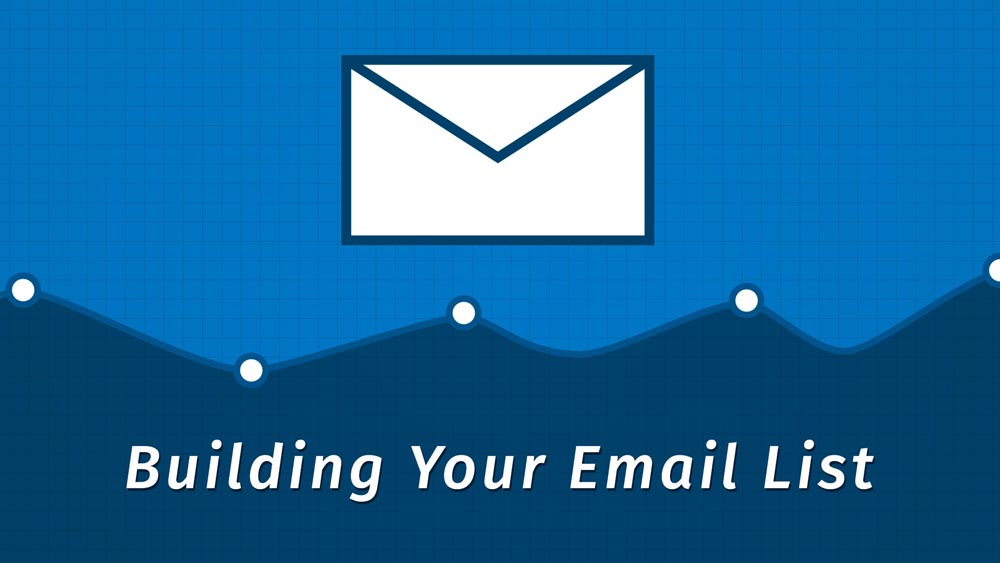
Step 3
Run outbound email campaigns
This is the point where some of you say:
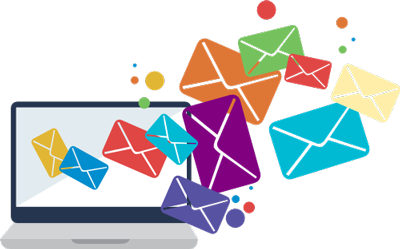
“Wait a minute! You want me to email a list of people that I bought from a list service? Isn’t that spam? I read an article that said it was spam. I’m not spamming people. No way.”
Stop, Look & Listen
It’s crucial at this point to get clear on the ground rules. And by ground rules, I mean the law.
As of the date of this writing, you are allowed to send unsolicited email messages to companies in the United States that are not “opt-in” as long as you follow the rules set out by the FTC, which you can find here:
http://www.ftc.gov/tips-advice/business-center/can-spam-act-compliance-guide-business
The most important ones are:
- The subject and header must not be misleading.
- You must have a valid physical address in your email.
- You must include a way to opt-out from future communications.
Assuming you comply with the legalities to send unsolicited email messages, you’ll then need to determine whether or not you wish to employ this strategy.
All the big corps are doing it, just look at your inbox, so why should you have an issue?
That fact is…
This strategy is powerful, it works, and it will grow your business.
When crafting your email, follow these simple guidelines. The goal of your email should be one of the following:
(a) to get a referral to the person you should be talking to in that organization; or
(b) to figure out the best day/time to have a conversation.
The emails should look as if they are a single email that came from a salesperson – which means they should be text based – so lose any images.
They should be easy to read and respond to on a mobile device.
They should be short. This is not the time or place for your elevator pitch.
Here is a sample outreach email:
Subject: Can you point me in the right direction?
Email body:
[firstname], I’m sorry to trouble you. Would you be so kind as to tell me who is responsible for [insert your biggest pain point here that resonates with your ideal customer; OR insert function like “sales” or “recruiting”] and how I might get in touch with them?
Thank you,
Shane Stamford
Chief Conversation Starter
XYZ Company
1234 Main Street
Des Moines, IA 50309
714-969-6213
What’s My Advice?
Start with that template and tweak as you learn more about who responds, and who doesn’t. If you need some motivation, this is the exact template that tripled our lead generation numbers in 90 days. Sounds insane, but it’s true!
You should be sending out between 50-100 of these targeted emails per day, with a goal of having 5-10 responses per day, including negative responses.
In the book, Ross suggests that you use a mass email tool. For further help, check out our email autoresponder review here. We take away the pressure and review the best bulk emailer tools on the market.
Two more things before we send you on to step #4.
Firstly, you are most likely to get a hold of the people you want to reach if you send your emails before 9 am or after 5 pm.
This makes sense, because those people are most likely in meetings most of the day, and not only won’t likely respond, but might be inclined to just delete it.
Secondly, you should also avoid sending the emails on Monday and Friday.
Ready for step 4?
Step 4
have the "discovery call.
So you got through to the person you wanted to reach, and they’ve agreed to a quick call to see if there’s a fit between what you provide and what they need.

Congratulations!
When you have the discovery call, the goal is not to sell – THIS IS IMPORTANT
The goal is to get them talking about their business and to listen. If you are talking more than 30% of the time, you are not asking the right questions.
Remember, this call is to determine whether or not there is a fit. See it as a fact-finding mission to understand your prospect’s business at this point.
Here are some of the questions you should be asking:
- How are your ____ teams/functions organized?
- How does your ___ process work today?
- What systems are your teams using today?
- How long has the system been in place?
- What are your challenges now?
- What would an ideal situation look like to you?
- How will your decision-making process work?
- What is the probability of a project happening this year?
The initial desirable outcome is to qualify whether or not the prospect has any real pain, and how likely they are to act on it relatively soon.
If they don’t have any pain or aren’t likely to act on it soon, it’s better to know now, so you can move on to accounts that are a better fit.
The second thing is getting the prospect to build the case for your product/service himself.
Understanding the exact words your prospect is using to describe their challenges, is like gold when it comes to closing the deal.
Finally, if your prospect is interested, but they need to convince their team, you should turn your attention to making this person a Champion, who can do the selling for you.
If you give them what they need to be successful (including time) and are persistent (but respectful), you’ll be building up the trust you need to close the sale.
I’ve seen this type of scenario in action personally, and it’s always best to have somebody “on the inside” to be doing the selling – Get them to be your influencer.
Step 5
Pass the Baton
This is the final step in the prospecting portion of the Predictable Revenue method of selling. Passing the baton over to the account executive to close.

Like I mentioned earlier, if you are in a smaller company, this person is still likely to be you, so there is no real hand-off.
But the principles are important to consider, even if you are running the entire process by yourself.
There is one thing that account executives hate – unqualified leads.
There’s nothing worse than thinking you’ve got a live one on the line, only to realize after stressing and straining for hours, it’s just an old useless tire.
Your compensation plan should be set up in a way
This same rigorous process should be applied even if you are a one-man-show.
Only continue to pursue leads that meet the pre-selected criteria you have set. It always hurts a little letting one off the line, but you are better off focussing your energies where you are more likely to be successful. It is after all a predictable revenue review!

Conclusion
If you follow the process laid out in the book, it could be a game changer for you. I urge you to consider buying and reading the entire book if you plan on implementing the full system in your business.
And now I’d like to hear from you:
What’s your #1 takeaway from my predictable revenue summary?
Or maybe you have a question.
Either way, I’ll be personally replying to comments and questions that come in.
If you like this article don’t forget to subscribe and let us help you grow your business.

